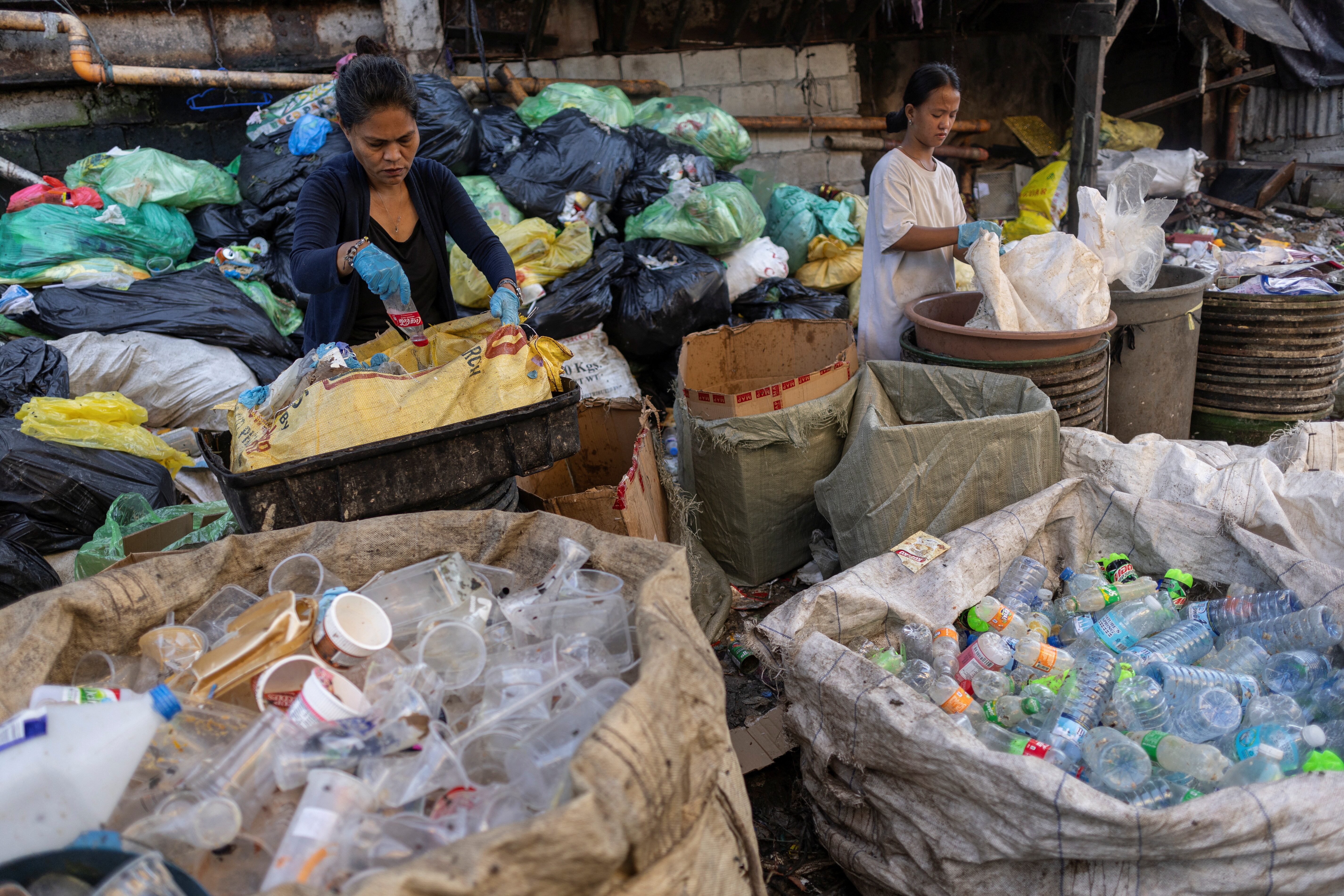Inspired by orange peel, this 'plastic' packaging is totally compostable

Plastic bags don't have to exist forever. Image: REUTERS/Lucas Jackson
What do you think of when you think of orange peel? Probably not a lot - it keeps the inside safe and juicy, right?
Well, exactly.
TIPA, a new World Economic Forum Tech Pioneer, has been inspired by orange peel to solve one of the most-talked about global problems - single-use plastic packaging.
More a-peeling than plastic
The company has developed an alternative to flexible plastic packaging, made from bio-material, that it says is fully compostable.
Most flexible packaging - think the packaging around fresh produce or coffee - can’t be recycled, because it’s made from layers of material. (Rigid packaging for food is generally more recyclable.)
TIPA says its packaging can be turned into compost in 6 months in an industrial composting facility.

Just like real plastic
According to TIPA, it's “just as transparent, durable and impermeable as conventional plastic packaging. It works for dry, baked and frozen goods, including fruits and vegetables, apparel and other products.”
This is vital if alternatives to plastic are going to take off. They need to protect food and maintain shelf life and hygiene in the same way as existing plastic packaging, and also fit seamlessly into existing production processes and logistics chains.
TIPA, set up in 2010 by Daphna Nissenbaum and Tal Neuman to address the plastic waste challenge, currently offers alternatives for everything from cereal bar packaging to magazine wrappers.

The scale of the problem
Only a small fraction of the plastic we’ve ever produced has been recycled. According to a 2017 study, since large-scale production began in the middle part of the last century, humans have created in excess of 8 billion metric tons of plastic.
In that time, more than 6 billion tons have become waste. And here’s the problem - just 9% of that is thought to have been recycled. The rest has either been burned (12%) or sits in landfill (79%).
Much of it also ends up in the ocean - about 13 million tonnes every year, according to UN Environment.
What is Loop?
A 2017 World Economic Forum and Ellen MacArthur Foundation report calls for us to change how we design packaging, improve recycling systems and introduce new models for making better use of packaging.
In effect, we need to go round in circles.
Building a circular economy
A circular economy aims to reduce waste by “designing better materials, products, systems and business models”.
This means that rather than things being thrown away, they’re reused, repaired or recycled - which impacts every stage of a product’s life cycle.
What is a circular economy?

And TIPA is not alone among the new Tech Pioneers in trying to make the world a little more circular. Black Bear Carbon Black, for example, upcycles old tyres to produce Carbon Black, which is in all manner of products from ink to keyboard buttons.
GHGSat is more on the policing side - its satellites and aircraft monitor emissions and can deliver analysis of specific sites.
Don't miss any update on this topic
Create a free account and access your personalized content collection with our latest publications and analyses.
License and Republishing
World Economic Forum articles may be republished in accordance with the Creative Commons Attribution-NonCommercial-NoDerivatives 4.0 International Public License, and in accordance with our Terms of Use.
The views expressed in this article are those of the author alone and not the World Economic Forum.
Stay up to date:
Circular Economy
Forum Stories newsletter
Bringing you weekly curated insights and analysis on the global issues that matter.
More on Circular EconomySee all
Wesley Spindler, Laura Fisher and Luna Atamian Hahn-Petersen
November 18, 2025








